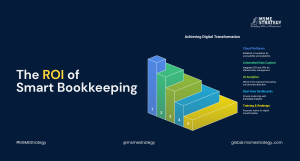In 2025, the financial health of a business no longer hinges solely on spreadsheets or quarterly reviews—it relies on real-time data and rapid insights. For small and medium enterprises (SMEs) across the globe, managing cash flow is not just a best practice; it’s a survival strategy.
Why Cash Flow is Still King
Cash flow—the net amount of cash moving in and out of a business—is the lifeblood of any enterprise. Yet, despite its critical importance, many SMEs continue to struggle with visibility into their financials. Delayed payments, rising operational costs, currency fluctuations, and changing consumer behaviors only add to the complexity.
In a globalized economy where competition is fierce and financial volatility is common, SMEs that monitor and manage their cash flow in real time gain a powerful competitive edge.
The Rise of Real-Time Financial Diagnostics
So, what’s changed in 2025?
The era of manual accounting is giving way to real-time financial diagnostics—smart systems that track financial data continuously and flag potential issues before they become crises. These tools are now accessible, affordable, and scalable for SMEs, thanks to innovations in cloud technology and AI.
Key Benefits of Real-Time Financial Monitoring:
- Immediate Visibility: Know your cash position at any moment.
- Proactive Decisions: Anticipate shortages or surpluses before they happen.
- Smarter Forecasting: Use AI and machine learning to project future financial trends.
- Investor Confidence: Transparency builds trust with investors and partners.
Global Trends in SME Financial Strategy
In 2025, several global trends are shaping how SMEs manage their finances:
1. AI-Powered Dashboards
Advanced platforms like Pulse, LivePlan, and Float now use AI to consolidate real-time data across bank accounts, sales platforms, and ERPs. These dashboards give SMEs a single source of truth to make informed decisions quickly.
2. Embedded Finance
SMEs are increasingly adopting financial tools within their core operations—think invoicing software with built-in credit options or point-of-sale systems that offer instant lending. This reduces friction and enhances liquidity access.
3. Automated Payment Reconciliation
Manual tracking of receivables and payables is being replaced by automation. Tools like Xero and Zoho Books now support auto-matching of transactions and smart reminders, reducing human error and improving cash inflow consistency.
4. SME-Specific Fintech Solutions
Fintech companies worldwide are creating niche products tailored to SMEs—whether it’s credit lines based on real-time cash flow, invoice financing, or dynamic discounting with suppliers.
5. Globalization of SME Finance
Thanks to cross-border banking and digital currencies, even small businesses are thinking globally. Real-time currency monitoring and international payment gateways are increasingly integrated into SME finance stacks.
Actionable Takeaways for SMEs
Here are five steps SMEs can take today to gain better control over their cash flow:
- Adopt a Real-Time Dashboard: Start with tools like QuickBooks, FreshBooks, or Float to track daily inflows and outflows.
- Automate Invoicing and Reminders: Use tech to follow up on receivables automatically—no more chasing late payments manually.
- Forecast Weekly, Not Just Monthly: Shorter forecasting cycles provide more agility and help avoid liquidity gaps.
- Connect with an SME-Focused Advisor: A consultant can help you select tools, analyze trends, and optimize your strategy.
- Stay Informed on Financial Tech: The ecosystem is evolving rapidly—subscribe to fintech newsletters or attend virtual SME finance summits.
In the fast-evolving business landscape of 2025, real-time financial diagnostics are no longer a luxury—they’re a necessity. SMEs that embrace this shift are better equipped to navigate uncertainty, seize new opportunities, and grow sustainably.
Need help navigating the future of SME finance?
Experienced consultants at MSME Strategy Consultants are ready to guide you.
#GlobalMSMEStrategy #SMEFinance #CashFlowManagement #DigitalSMEs #FutureOfFinance






